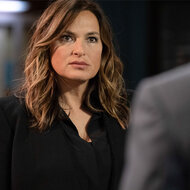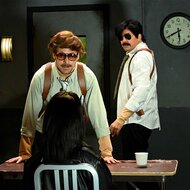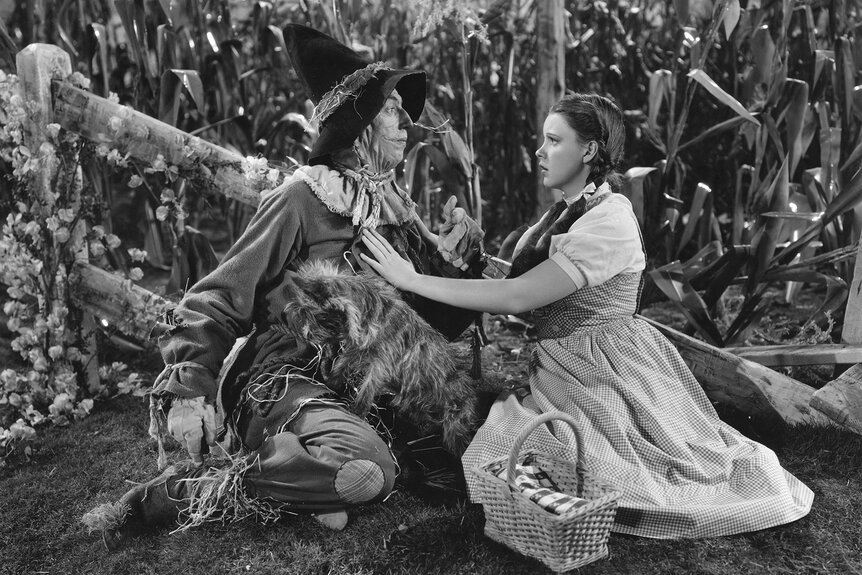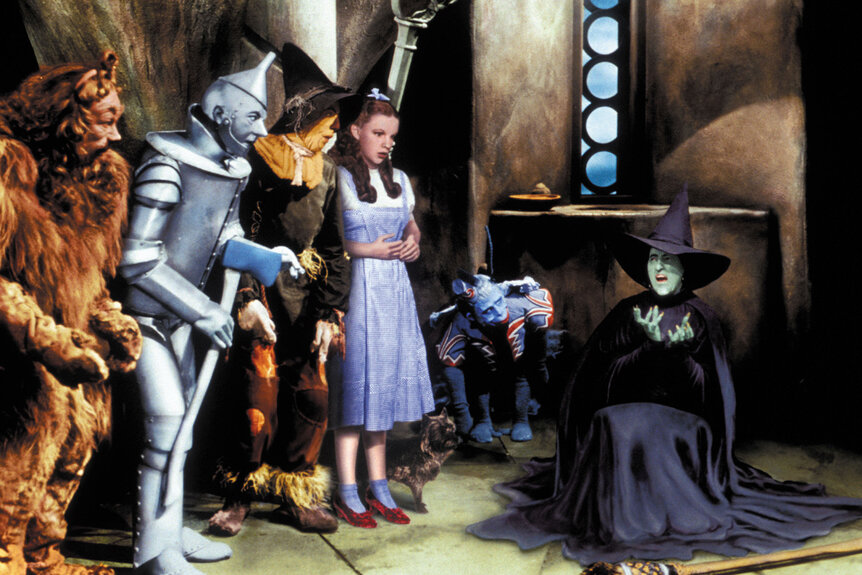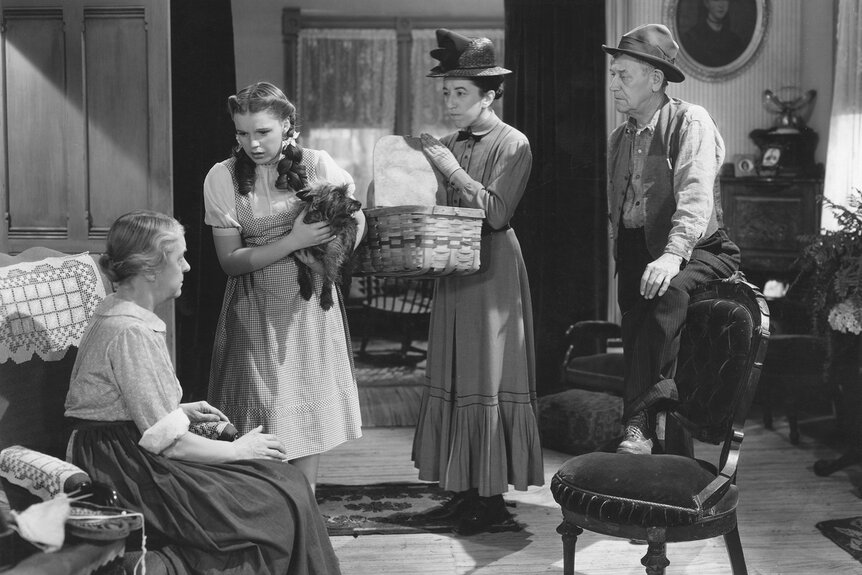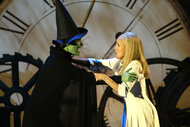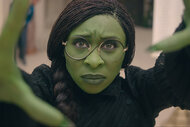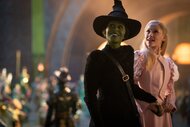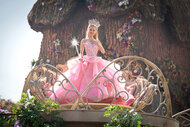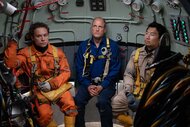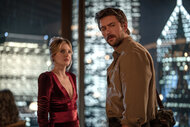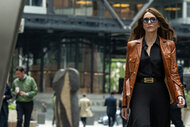The History and Legacy of The Wizard of Oz: Remembering the Yellow Brick Road Before Wicked
Back in 1939, The Wizard of Oz was a fantasy in full color that reimagined what movies could be.
Moviegoers will soon return to Oz in the screen adaptation of Wicked, directed by Jon M. Chu. It’s the first of a two-part adaptation, reimagining the famed Broadway musical as a blockbuster Hollywood spectacle, in theaters everywhere November 22.
Wicked stars Cynthia Erivo as Elphaba Thropp (the eventual Wicked Witch of the West) and Ariana Grande as Galinda Upland (who will go on to become the Good Witch of the North). They’re joined on screen by Michelle Yeoh, Jeff Goldblum, Bowen Yang, Peter Dinklage, and more, in supporting roles.
RELATED: Everything to Know About the Broadway Hit Wicked
Since its publication in 1900, L. Frank Baum’s The Wonderful Wizard of Oz and its various sequels and adaptations have captured the imaginations of generations of children and adults. It’s partly responsible for the popularization of color film and the success of fantasy as an on-screen genre. Before we head to the theaters for another visit to Oz, let’s take a look at the history and legacy of 1939’s The Wizard of Oz, a cultural touchstone which pushed the boundaries of what movies could be.
The Wizard of Oz premiered in August 1939
A number of actors were in the running for the lead role of Dorothy Gale, including Shirley Temple, but the part ultimately went to Judy Garland. In spite of an impressive filmography, it remains Garland’s most famous role. The film premiered in August of 1939 to almost universally positive public reception.
A Harrison Reports review from the time states, in part, “from a production standpoint, it is something to marvel at, for the settings are not only exceedingly lavish, but also unusually imaginative; and the technicolor photography adds to their beauty… even though some persons are not interested in pictures of this type, it is possible that they will be eager to see this picture for its technical treatment. The performances are good, and the incidental music is of considerable aid. Pictures of this caliber bring credit to the industry.”
RELATED: NBC Reveals Epic, Behind-The-Scenes Wicked Special Defying Gravity: Everything to Know
The suggestion that “some persons are not interested in pictures of this type” was a reference to its genre. By the late 1930s, fantasy flicks hadn’t performed well at the box office and studios were resistant to take a chance on them. Early drafts of The Wizard of Oz stripped the story of its fantastical elements, setting it firmly in the real world. Disney’s Snow White and the Seven Dwarfs had recently hit theaters, however, and raked in the cash, inspiring other studios to take another shot on the genre.
What is The Wizard of Oz (and Wicked) based on?
Over more than a century, Oz has gone through a number of iterations and evolutions, each building off the ones that came before. The upcoming Wicked film is based on the 2003 stage musical of the same name. That musical, in turn, is based on the 1995 novel Wicked: The Life and Times of the Wicked Witch of the West by Gregory Maguire.
Maguire’s story is an alternate history, a revised exploration of the characters and settings set down in the original Oz stories and inspired by the aesthetic and tone of the 1939 film. The 1939 film is, of course, a fairly faithful adaptation of L. Frank Baum’s 1900 novel, with a few liberties taken to satisfy audiences of the day. Baum’s novel was itself inspired by his own life experiences, and a desire to fit those experiences into a modern fairy tale.
Now in Technicolor! The cultural impact and lasting legacy of The Wizard of Oz
The fact that The Wizard of Oz is still a go-to film nearly a century later is a testament to how effective it was and is. Moving pictures had only been invented a few decades prior, at the end of the 19th century. Those earliest films were silent and sometimes accompanied by music produced in the theater.
The first movies with synchronized sound didn’t arrive until the end of the 1920s, just a decade before The Wizard of Oz. The addition of sound allowed for the introduction of a new kind of film: the musical. Movies were becoming a closer representation of real life, but they were still largely colorless. Outside of a few limited processes like painting color onto the film manually after the fact, no one had yet cracked a reliable means of creating true color films. Enter: Technicolor.
RELATED: Check Out the Best Wicked Inspired Merch: Starbucks, Popcorn Buckets, Cocktails & More
The Technicolor process was complicated and expensive, but ingenious. As light entered the camera, it first passed through a prism which split it into three distinct light beams. Each beam favored a particular part of the light spectrum: red, green, or blue. Each beam was then captured on its own band of film. During processing, filmmakers passed each film band through the appropriately colored dye. When all three bands were stacked, the hues came together to create a convincing approximation of true color.
The Wizard of Oz was one of the most expensive movies ever made at the time
The Wizard of Oz was MGM’s most expensive production ever, at the time. It was expensive because it required three times as much film as a black and white production and, because the light was being split, they had to shoot under intense lighting. Temperatures on set reportedly got over 100 Fahrenheit, something which was particularly challenging for heavily costumed actors.
“We had enormous banks of lights overhead. We borrowed every unused arc light in Hollywood. It was brutally hot. People were always fainting and being carried off set,” said cinematographer Harold Rosson in the book The Making of the Wizard of Oz.
The upshot was that the film could create iconic imagery like the Yellow Brick Road, the ruby red slippers, and the green Emerald City. That wouldn’t have been possible, or at least wouldn't have been as effective, without the benefit of Technicolor.
It was a gamble that didn’t immediately pay off. On release, The Wizard of Oz earned about $3 million at the box office. After accounting for production, marketing, and distribution, the studio lost more than a million dollars, despite almost universal acclaim. It didn’t break even until its re-release a decade later in 1949, but the long arc of history would be good to The Wizard of Oz. It’s the most watched movie of all time, according to the Library of Congress, and was one of the first 25 films to be included in the National Film Registry of the United States, which preserves films for their historical, cultural, and aesthetic contributions.
Roger Ebert, the preeminent movie critic of our time, said that as a child he didn’t notice if a movie was in color or monochrome until he saw The Wizard of Oz. Only then did the appearance or lack of color become apparent. He noted that the switch from black and white to color within the narrative of The Wizard of Oz would have had a special resonance in 1939. It turns out that it still has a special resonance today.
See Oz as you've never seen it before in Wicked, premiering in theaters everywhere November 22.


















